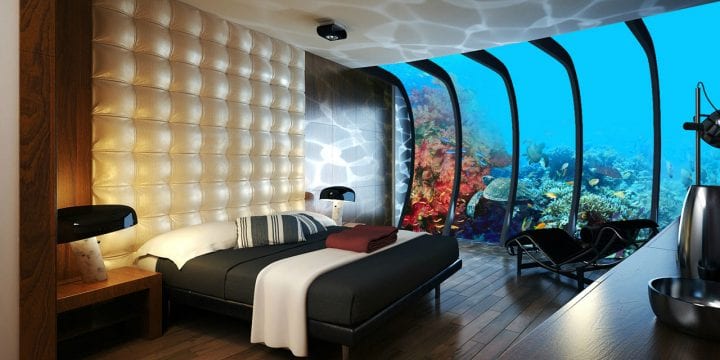
The 11 Fastest Growing Trends in Hotel Interior Design
Modern hotels have cleverly adapted to rapid social changes with creative solutions. In this post we will cover 11 of the most striking interior design trends that shape up today’s hospitality scene. From rethinking guestroom configurations to ensuring highly personalized experiences, hotel owners are transforming accommodation units into the highlights of any escape. Whether you own a hotel or planning your next business trip abroad, here are some of the new twists in the industry:
#1. Lobbies envisioned as dynamic multi-use spaces
On Freshome, we’ve seen many hotel projects focused on offering a striking first impression. The importance of entrance lobbies is growing, as social encounters become more and more dependent on this particular hotel area. With the new business traveling trend, hotel lobbies should provide a multi-use space for casual as well as formal talks, working on laptops, plugging in various devices. This means a simple sofa-coffee table arrangement won’t cut it. Creative space segmentation is necessary, providing both intimate and social zones, as well as furniture delivering comfort and functionality. More extravagant entrance features in today’s emerging hotel market include large green walls, indoor waterfalls, large chandeliers and multimedia stations.

#2. Rethinking Guestroom Configurations
No longer is the classic bed-table-locker combo enough to make a hotel room feel inviting. In today’s world guests expect surprises and where else, but away from home. Probably why each interior in the modern hospitality industry is very different from the next. Creative offices for business travelers, interesting looking TV panels and an extra sofa next to the king-sized bed are just some of the key “ingredients” for a trendy hotel room. We’ve also seen color explosions and eclectic decor mixes, which can definitely appeal to guests wanting to experience unique accommodation.

#3. Spa-Like Bathroom Features
Bathrooms stopped being perceived as auxiliary rooms, spaces to be minimized, in order to expand living areas. The modern tourist expects more than he gets at home in his journeys. A resort bathroom with spa-like features is an open invite to relaxation and a sure-proof method of alluring guests through the promise of ephemeral luxury. Think en-suite bedrooms, waterfall showers, over-sized bathtubs, his&hers sinks, giant towels, beauty items and plenty of space.
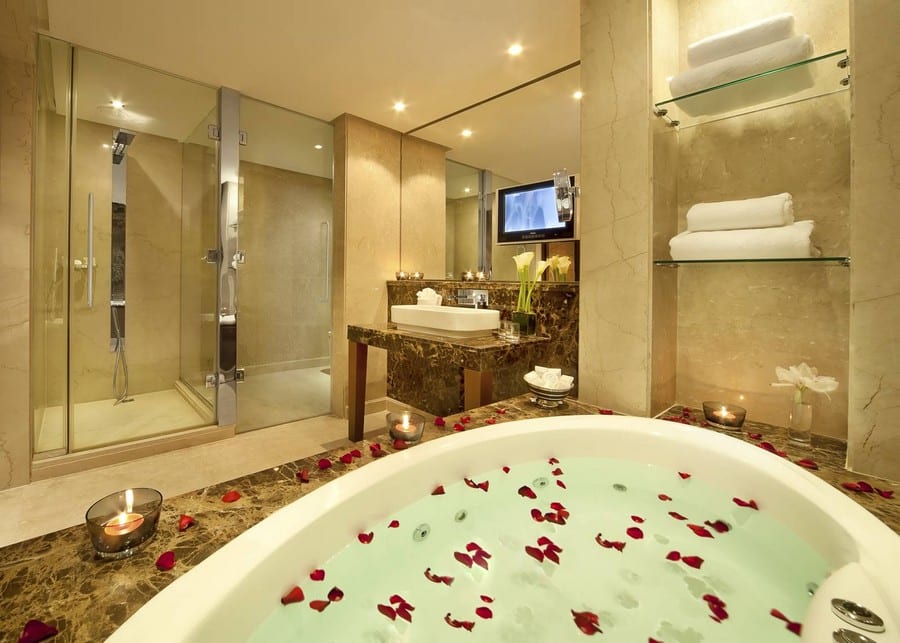
#4. Not Just a Restaurant, But a Destination in Itself
Few hotel restaurants still base their appeal strictly on “practicability”. Cooking is an art and so should be the “exhibition space”. We’ve seen more and more hotel restaurants turned into memorable spaces through design. Themes are highly recommended, pushing creativity to new heights and turning each venue into a destination in itself.
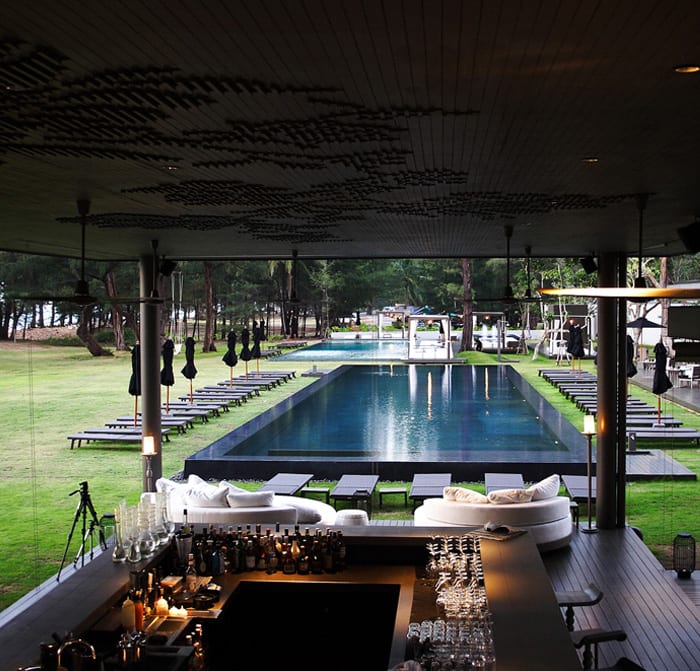
#5. Blurring Indoor-Outdoor Boundaries
Sensory experiences go a long way. This “principle” was well integrated in the array of services offered by modern hotel owners, who struggle to keep the indoor outdoor transition as “ethereal” as possible. Not only are hotel rooms expanded through large decks and terraces, but nature is brought inside in every possible way. Wood paneling, stone decorations, lush greenery, indoor waterfalls- these are just some of the elements employed to release the tension of hotel guests.

#6. Green Features
Sustainability is a delicate issue for hotel owners, as they are doing their best to minimize short term costs. But being ahead of the game is important, which sometimes leads to innovative ideas. Over-sized windows for natural lighting, natural building materials, green walls and green roofs, recycling bins for guests, electronic water faucets, locally grown food for cooking and graywater recycling are just a few of the hotel trends for staying green.
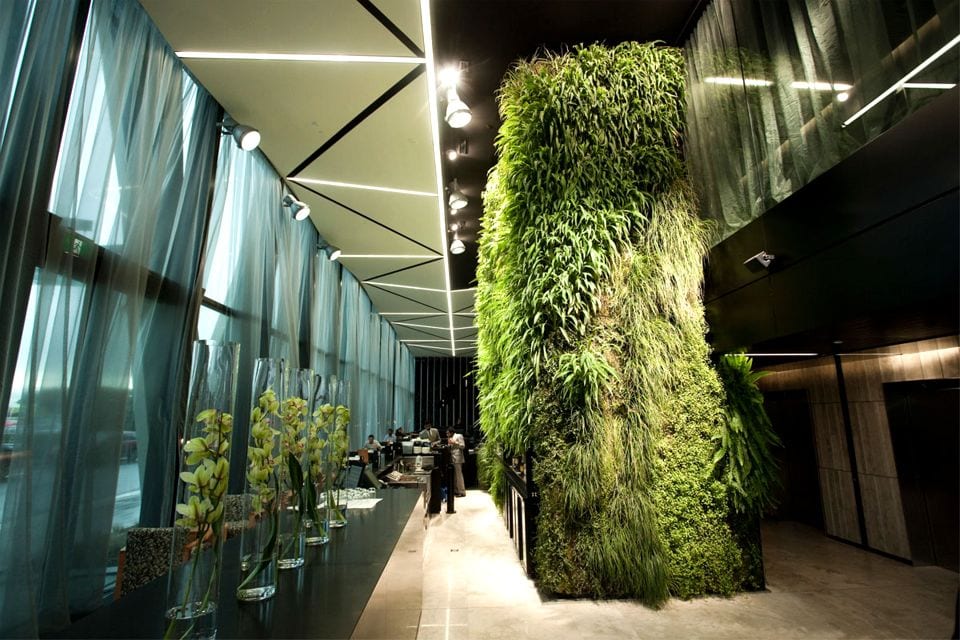
#7. Focus on Local Art
It is a real shame that modern architecture usually distances itself from local origins. Sometimes we look at a house on Freshome and its design tells us nothing of its location. Luckily, more and more hotel owners realize that adding local art in their design scheme will improve guests’ perception of the place and create a genuine experience. From small sculptures and photography to large-scale installations, integrating an art project into the image of the hotel could be an easy way to success. The Tantalo Hotel (photo below) is a good example of modern panting blended with contemporary design.

#8. Technology Overload
Not everyone is looking for a hi-tech accommodation away from home. On the contrary, people tend to disconnect during holiday time. But more and more hotels focus on keeping guests “plugged in” at all costs. Certainly a good way to go when it comes to business tourism, a technology-friendly room encourages work-flow and in the long run, the guests’ fidelity. New hotels offer the possibility of adjusting lighting, air conditioning and even window blinds through smartphones, which often turns out to be a good business approach. Another trend is placing PC tablets at check-in for printing boarding passes, as well as for ensuring other self-helping processes requiring online connection.

#9. Less Pattern, More Color and Texture
When away, you usually have more time for exploring your senses. This is probably why hotel rooms are easily letting go of visually upsetting patterns and embracing texture instead. Giving guests something they can feel and even get lost in can result into a memorable experience, one they will probably want to repeat. Add a few bright colors to animate spaces and a soothing joyful atmosphere is created.

#10. Personalized Spaces
It is a fact that the memory of a hotel stays with guests a long, long time if the accommodation experience is unique. With this in mind, hotel owners personalize spaces as never before. Pop-up hotels, and modular hotels are new concepts slowly gaining interest in the industry. Themed guestrooms also have a strong impact, especially when visitors can only try one at a time.
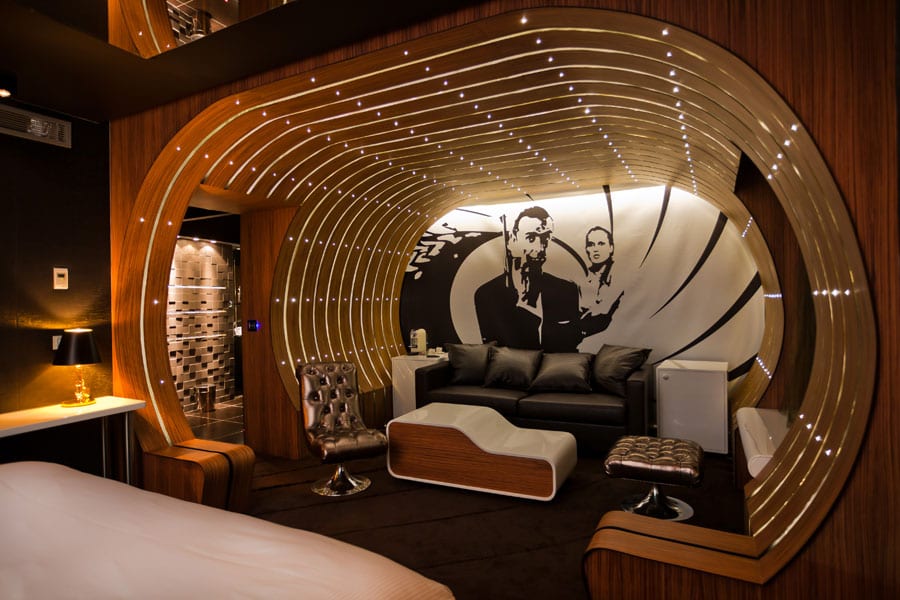
#11. A Home Away From Home
More than anything, hotel rooms should provide comfort, that feeling of a home away from home. No matter how luxurious, technology friendly and weird-themed the room, coziness is a major factor to consider. Wood additions, inspired decorating items, carpets, curtains, a fireplace, a TV set and the possibility to play your guest’s favorite music- all these adds up to a memorable stay.

Source: Lavinia – https://freshome.com

